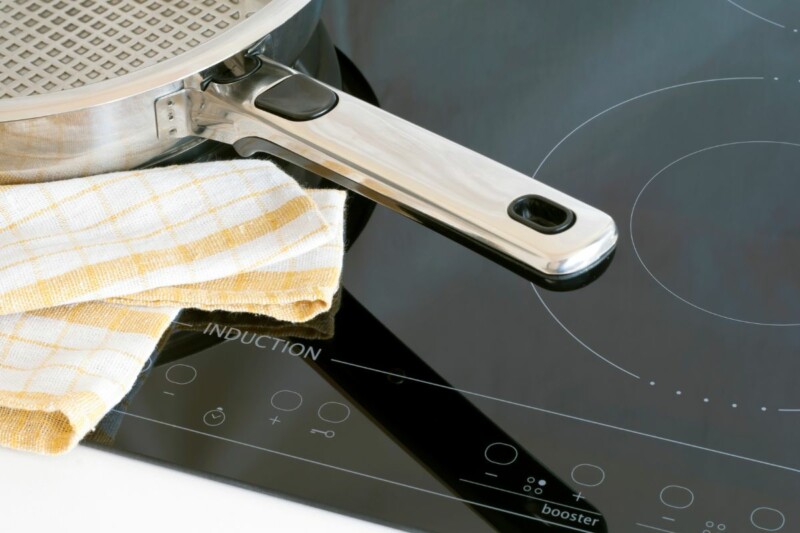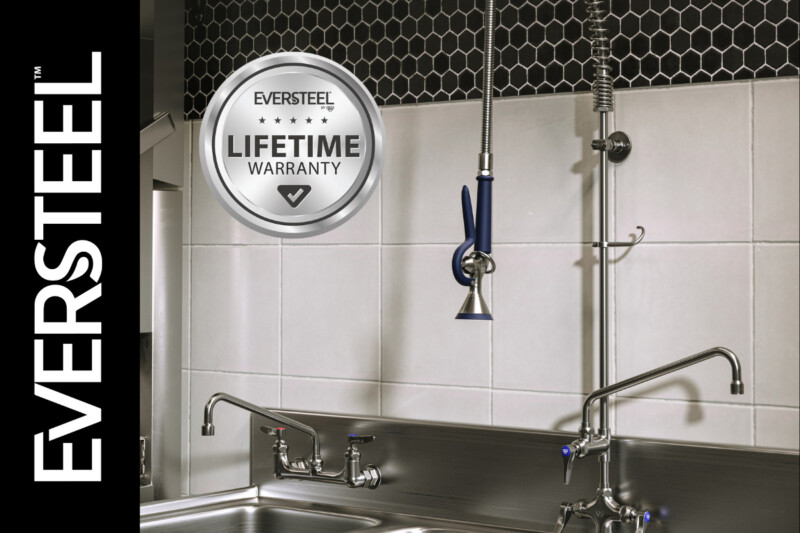Sizing Up Ice Shapes
Start surfing ice-machine makers’ websites, and your head will spin with the available number of ice shapes, sizes and styles. The most common machines are cubers. Cubers flow water over an evaporator plate, freezing water in layers and pushing out impurities in the process. That’s why commercial ice is almost crystal clear, and ice from a home freezer is cloudy.
Ice-machine manufacturers offer a range of cube-ice shapes. You can opt for crescents (Hoshizaki), cubes and half cubes (Scotsman and Maxx Ice), rhomboid dice, half dice and quarter dice (Manitowoc, Ice-O-Matic and IMI Cornelius) and tubes (Vogt Ice). Large “gourmet” cubes come in shapes called top hats, which actually look more like champagne corks; they’re big, super clear and very hard. And because they melt slowly, 1¼-in.+ square cubes like those from Kold-Draft and Hoshizaki as well as crystal-clear Manitowoc octagons, are especially ideal for sipping and savoring high-end brown spirits.
Stateside, people expect cold drinks to be very cold; they often insist on a lot of ice. Bar managers like this inclination because the more ice you have in a glass, the better the displacement, i.e., the same measure of ingredients over a large amount of ice translates to a bigger glass and greater perceived value. Ice machines frequently are chosen for the shape of ice they produce and the ice’s displacement ability. Any of the crescents, dice, tubes and cubes will work behind the bar in your operation because they’re hard, provide a good melt rate, displace well and chill quickly.
Ice Is An Ingredient
Ice does much more than displace and chill beverages; it also provides the water required in a drink recipe. “In any multi-unit situation, the chain will usually choose one brand of ice machine, one style of ice,” says David Commer, President of Commer Beverage Consulting in Carrollton, Texas. “Their drink recipes have to be uniform throughout the country, and different ice would play havoc with recipe consistency and beverage costs.
“I read an article about how bartenders don’t shake cocktails long enough to get the right amount of ice melt,” he continues. “I couldn’t agree more. A martini, for example, needs to include about 20% water from the ice to taste right.”
A shaker needs to be loaded at least three-quarters full of ice and shaken 10-15 times to get the right chill and ensure enough melt. If you are stirring the drink and need it to strain clear, be sure to stir long enough for the cubes to melt some water into the drink. Pour the drink as soon as you’ve finished shaking or stirring it; waiting provides too much time for the ice to melt.
Although there are exceptions, strain the cocktail into a glass filled with fresh ice—if ice is needed. Using the cracked, foamy ice from the shaker makes the drink look terrible.
All It’s Cracked Up To Be
Sometimes cubes aren’t going to cut it; the drink calls for cracked ice. Take note, cracked ice is not the same as flake or shaved ice. Cracked ice comes from pounding nice, hard cubes into nice, hard pieces of cubes. If you’re serving any kind of Polynesian drinks, caipirinhas, certain margaritas and some others, you might want to use cracked ice.
It’s worth your while to spend money on a high-quality, heavy-duty commercial blender; hard ice does a number on the blades and motor of anything less than professional grade. Pulse a few cubes in a heavy-duty blender to get a batch of cracked ice. Or take the manual route—wrapping cubes in a clean bar towel and pounding away with a mallet—it’s effective but messy. Another option is a Lewis bag, which is typically made of cotton canvas; bartenders fill it with cube ice and hit it with a mallet.
Flake, The Other White Ice
In addition to cubers, most ice-machine manufacturers offer ice-flake machines. Rather than freezing ice in layers into cube shapes, water freezes on the wall of a cylinder and is scraped off in flakes by a rotating auger. Most bars have little use for flake ice, save for the purist’s julep, mojito, mist and frappe, because flake ice simply is too soft and melts too fast, even for blender drinks. However, most ice-machine makers also offer ice made of compressed flake ice, and that’s a whole different story.
Depending on the ice-machine company, compressed flake ice goes by the names of nugget ice, Cubelet ice, Chewblet ice, Chiplet ice, etc. There is lots of information about how nugget ice is formed (see FER December 2014 article, “Panning For Gold In Nugget Ice”). What’s key is that this type of ice is popular for soft drinks. Some convenience-store chains offer a choice of cube or compressed flake ice.
Compressed flake ice is anywhere from 60%-90% ice, according to manufacturers; the rest is water, so it’s a lot softer than cubes. Compressed flake ice produces excellent fill/displacement for soft drinks; it’s said to help retain carbonation, carry a soft drink’s flavor better than cubes and chill nicely. Nugget ice is a huge trend, according to ice-machine manufacturers, it keeps customers satisfied with their fountain beverage down to the last chewable bit of ice. For the operator, compressed flake helps keep beverage costs down as it displaces more liquid than cubed ice and lowers syrup costs per cup. With its softer consistency, it’s also an excellent option for blender-drink programs if the bar menu leans toward frozen and tropical libations.
Until more recently, compressed flake wasn’t the best candidate for soft-drink dispensers—it was too soft and would chunk up in the ice chutes. Sonic Drive-In, considered Mecca to ice chewers, serves nugget ice but scoops it from bins. However, breakthroughs in compressed-flake ice dispensing systems have come from companies such as Lancer Corp. (Hoshizaki-owned), Cornelius and Follett Corp., the latter of which only makes compressed-flake ice machines.
No matter what kind of ice you use, consider this: In terms of quantity, you sell more ice than any other food on your menu. So, it’s well worth your while to pay attention to ice quality and train bartenders on the benefits ice brings to their craft. Also, be sure to burn those bins regularly, refresh ice often and keep it clean.
Ice-Maker Breakers
Hopefully, you’ve got some other person in your organization whose job it is to make sure your ice machine is running correctly. We say “hopefully” because ice machines are a foodservice equipment category unto themselves—anything that uses water always is—and there are service agencies that specialize in maintaining ice makers.
However, a couple of maintenance tips never hurt and can help ensure your operation is supplied with good-quality ice.
One common mistake: Users tend to buy units with smaller production volumes than they actually need. “All of the manufacturers offer sizing charts to guide you on how large a machine you’ll need, but there are a couple things you should consider,” says Scott Hester, V.P./Owner, Refrigerated Specialist Inc., Mesquite, Texas.
First, manufacturers’ production quantities often are based on colder water and ambient temps than your operation actually experiences. For example, if a manufacturer says a unit produces a specific amount of ice per day, the quantity might be based on water coming in at 50°F and 70°F ambient air. However, if you’re in the South, your operation mostly likely won’t see those temperatures. The warmer the incoming water and surrounding air, the less ice the machine will produce.
Different parts of the country have different water quality, too. “But just about everyone can benefit from a water filter on the ice machine,” Hester says. “You’ll just get a better tasting, clearer ice and, if your water is hard, you’ll get less scaling on the machine components. That means better efficiency and ice quality.” However, filters are useless if you don’t change the cartridges regularly.
Filters present a bit of a catch-22. “Some filters filter out chlorine, and chlorine holds down mold and bacteria growth in the machine,” Hester says, which is why scheduling thorough, professional cleaning and sanitizing of your ice machine two to three times a year is critical. “But if you have any kind of yeast in the environment near your ice—such as that in pizza crusts, baked goods or beer kegs—you’ll see a slime buildup in your ice machine and bins in no time.” If that’s the case, you might need to clean them more often, such as every four to six weeks. Look into tools that help restrict the growth of algae, bacteria and mold, including UV lights, chlorine-dioxide sachets, anti-microbial wands and an ozone generator that kills water contaminants coming into the ice machine.
Article reprinted with permission of Cheers magazine.
RELATED CONTENT
- Advertisement -
- Advertisement -
- Advertisement -
TRENDING NOW
- Advertisement -
- Advertisement -
- Advertisement -


